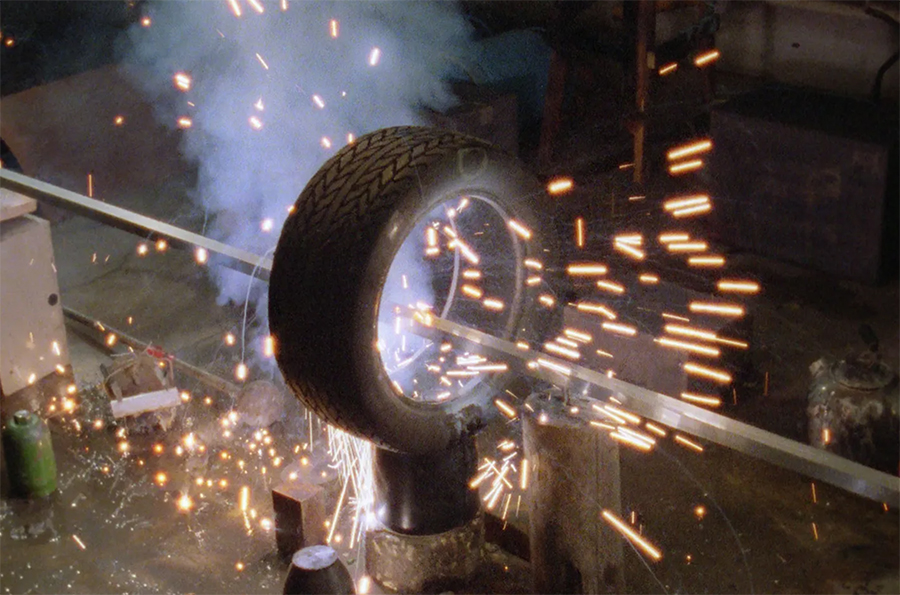An industrial Rube Goldberg art film created to explore entropy and “states of impending collapse,” The Way Things Go (Der Lauf der Dinge) was filmed without sound in an empty warehouse from 1985 to 1987 by Swiss artists Peter Fischli and David Weiss.
Lit candles slide into fireworks that send sparks into flammable liquids. Garbage bags spin and hit tires that roll, knocking over teetering ramps. A corrosive liquid appears to dissolve styrofoam, sliding knives into liquid-filled balloons. There are frothing liquids and spattered powders all over the floor. As they say, do not try this at home. From the Guggenheim:
“Through sheer determination and hours of trial and error, they composed cinematic sequences in which objects careen into one another, light each other on fire, and fly from place to place in an endlessly unraveling chain reaction.”


“In fact, the sense of continual movement is an illusion: the piece comprises nearly two dozen separate shots filmed without sound over a period of two years. Fischli and Weiss masked the transitions by fading between images of white foam or bright explosions and added audio effects in postproduction—part of their sustained effort to remove any evidence of human involvement in the actions. The objects appear to move of their own volition, freed from their usual functions and reveling in the pleasure of their misbehavior.”


Via a book description for Jeremy Millar’s Fischli and Weiss: The Way Things Go on MIT Press:
“The work embodies many of the qualities that make Fischli and Weiss’s work among the most captivating in the world today: slapstick humor and profound insight; a forensic attention to detail; a sense of illusion and transformation; and the dynamic exchange between states of order and chaos… As everyday objects crash, scrape, slide, or fly into one another with devastating, impossible, and persuasive effect, viewers find themselves witnessing a spectacle that seems at once prehistoric and postapocalyptic.”

Watch Entropy: How a sandcastle reveals the end of all things, a BBC clip, next.
Plus, more Rube Goldberg machines:
• OK Go: This Too Shall Pass (2010)
• The Dinner Feeder by Joseph Herscher
• The Swish Machine, a 70-step basketball trick shot Rube Goldberg Machine
• The Lemonade Machine, an epic Rube Goldberg collaboration
Bonus: The art of sound design: How to be a Foley artist.
Curated, kid-friendly, independently-published. Support this mission by becoming a sustaining member today.


